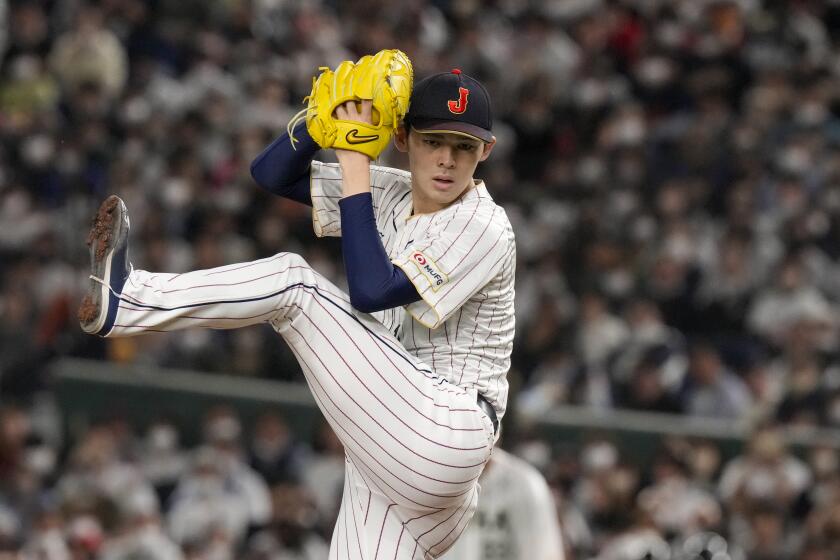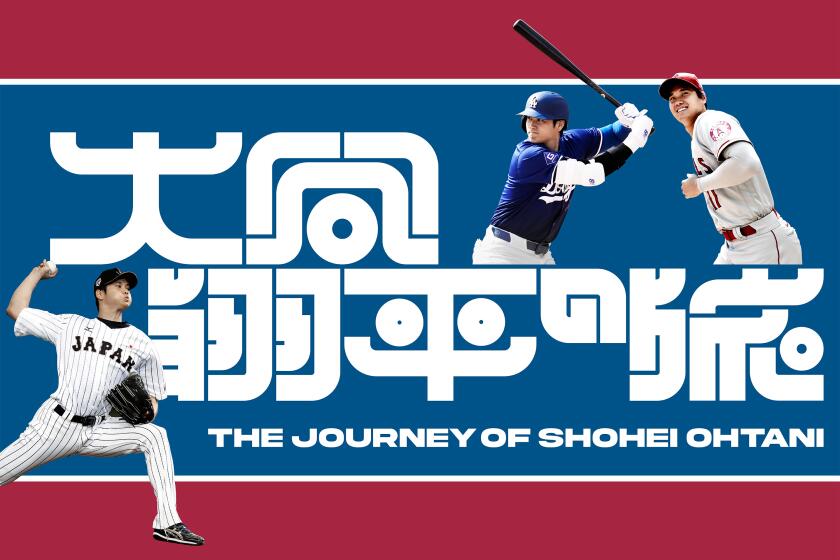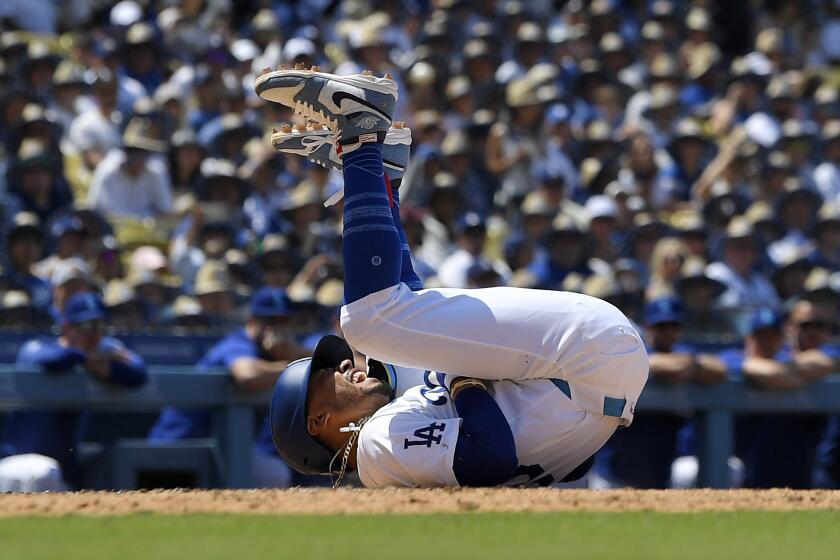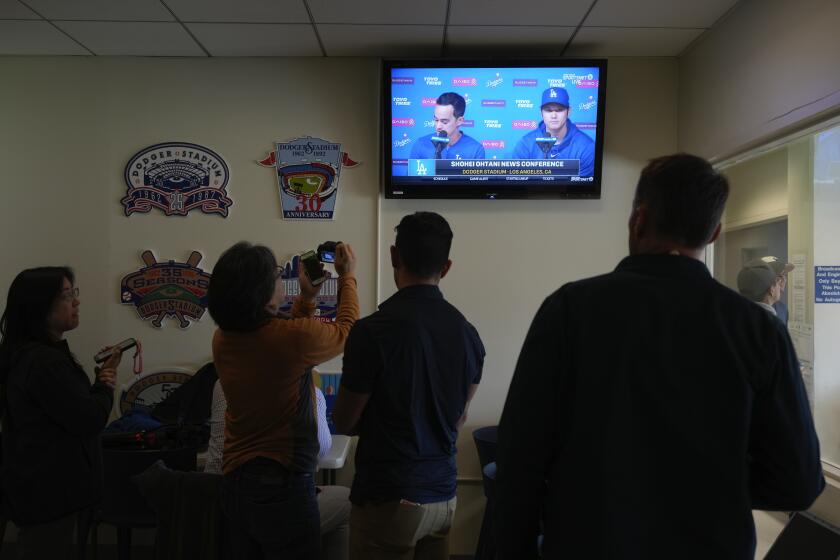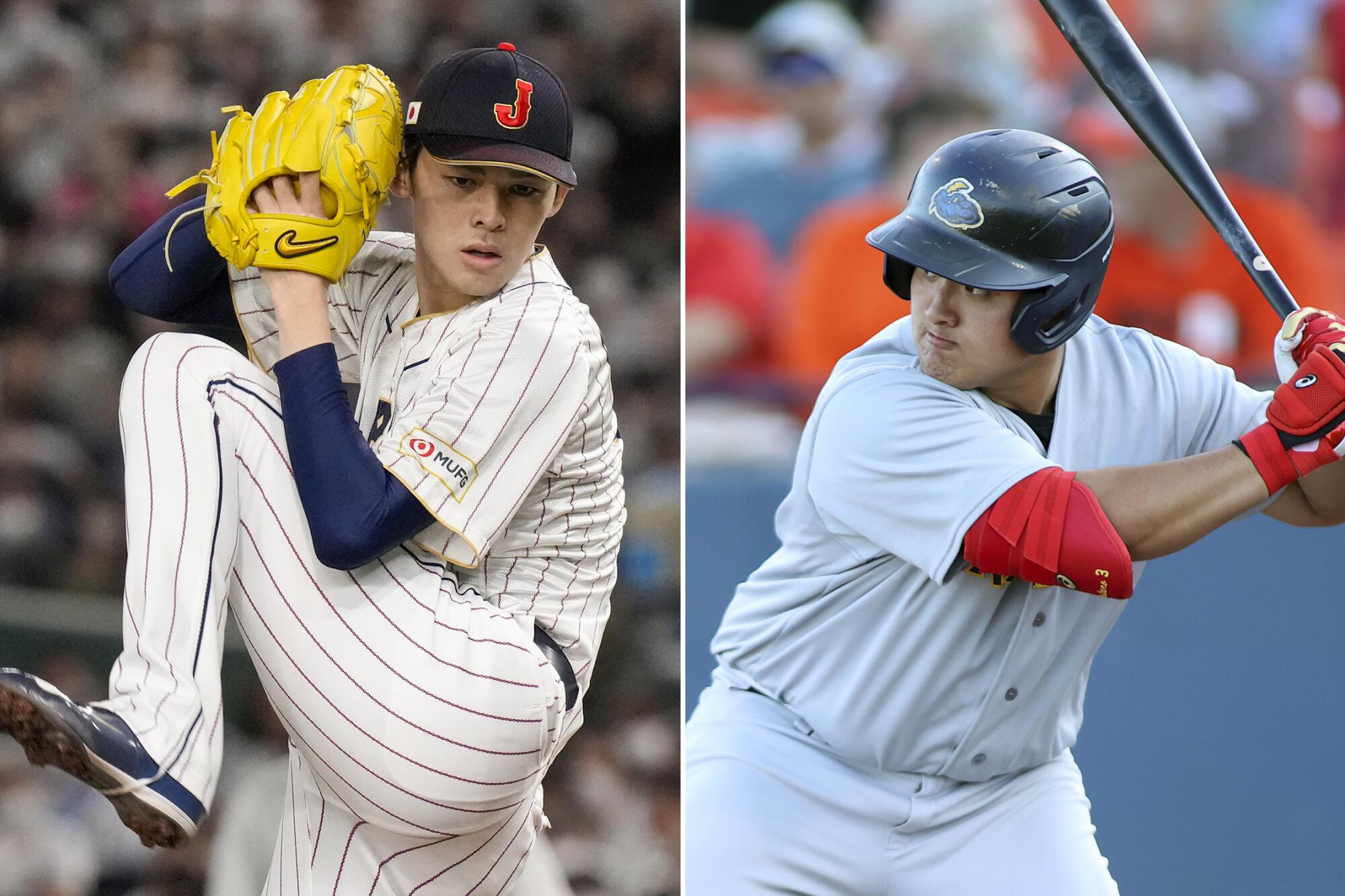
Rintaro Sasaki homered in the second at-bat of his U.S. amateur debut last week, the blast grabbing headlines because the 19-year-old might be the next big bat export from Japan to Major League Baseball.
But let’s not be confused.
Rintaro is a different Sasaki than the one who threw 26 fastballs clocked at triple figures during a lights-out performance for Japan against Mexico in the 2022 World Baseball Classic. That was Rōki Sasaki, another phenom seemingly destined for a huge MLB payday.
Rōki, 22, is in his fourth season pitching professionally in Japan for Chiba Lotte, where he’s compiled a record of 25-12 with a 1.91 earned-run average and 465 strikeouts in 363 innings. The 6-foot-4 right-hander would remain under Chiba Lotte control until he accrued nine years of service time. A move to MLB before that would require him to be posted by the team.
If the Dodgers are aggressive in going after Roki Sasaki, a 22-year-old pitching sensation, it could affect their pursuit of Shohei Ohtani.
Rintaro’s homer for the Trenton Thunder in the so-far obscure MLB Draft League is incidental compared to his long-term plans. He will suit up for Stanford next spring, circumventing the posting process that Rōki is navigating.
Rōki made history in April 2022 by striking out 13 batters in a row en route to tying a Nippon Professional Baseball record with 19 strikeouts in a game. And, oh, by the way, in that game he also became the first pitcher in Japan to pitch a perfect game in 28 years, and he tossed eight more perfect innings in his next start.
Rintaro made history by belting 140 home runs in high school, the most ever by a Japanese player. He attended Hanamaki Higashi High, as did Dodgers two-way superstar Shohei Ohtani and Toronto Blue Jays pitcher Yusei Kikuchi — and Sasaki’s father, Hiroshi, coached all three.
A look at Shohei Ohtani’s prolific baseball career, starting with his meteoric rise in Japan, his two-way stardom with the Angels and his eventual signing with the Dodgers.
It all sounds as if combined, the two Sasakis would form a creditable Ohtani clone. Could either of them — or even both — become Dodgers?
Rintaro is a long shot if he develops into an elite prospect because draft picks are in reverse order of the previous season’s standings. The Dodgers always seem to be picking late in each round.
Rōki, however, could sign with the Dodgers if he is posted. Whether they still covet him after spending more than $1 billion on Ohtani and Japanese pitcher Yoshinobu Yamamoto is conjecture, although Andrew Friedman and other Dodgers executives have scouted him since he was in high school.
Both Sasakis have compelling life stories distinguished by charting their own paths rather than following the crowd.
Whether the Dodgers can be as good as they were before injuries hit Mookie Betts and Yoshinobu Yamamoto last weekend against Kansas City, only time will tell.
As a former resident of the town of Rikuzentakata, Rōki represents the recovery of the Tohoku region that was devastated by an earthquake and tsunami in 2011. When he was 9, the tsunami claimed the life of his father and a set of grandparents. His mother moved him and his two brothers about 10 miles up the coast to Ofunato, where he attended a small high school less prestigious than the numerous schools recruiting him.
At the time, he said he wanted to continue playing with the teammates who supported him as he and his family rebuilt their lives.
“I want to end with us winning together,” he said before the national season-ending tournament his senior year. “That was what I had in mind when I chose this school.”
He pitched a six-inning no-hitter in his first tournament start and followed that with a 12-inning complete game in which he struck out 21, threw 194 pitches and hit a game-winning home run. In his final start in the semifinals, he struck out 15 in a complete-game victory, but Ofunato lost in the finals.
Rintaro is taking a different route to MLB than the biggest names ever to play in Japan — Ichiro Suzuki, Hideki Matsui, Ohtani and Rōki Sasaki first established themselves in the Japanese professional league.
Few in Japan want to believe national hero Shohei Ohtani could be accused of wrongdoing in the sports gambling scandal involving his ex-interpreter, Ippei Mizuhara.
Leaving for the U.S. directly from high school was a bold move for the 6-foot, 250-pound first baseman. So far, so good, as his home run in Trenton’s opener attested. Fans lined up for autographs after the game and followed him to the clubhouse.
His manager, Adonis Smith, had turned to the players in the dugout when Rintaro came to bat and said to admire the moment.
“The next thing you know, he drops the head [of the bat] and he clears the wall,” Smith said. “It was magical.”
Rintaro and Rōki — the next big things from Japan who share a last name — could provide magical moments in MLB. Whether either of them is wearing a Dodgers uniform remains to be seen.
More to Read
Go beyond the scoreboard
Get the latest on L.A.'s teams in the daily Sports Report newsletter.
You may occasionally receive promotional content from the Los Angeles Times.
